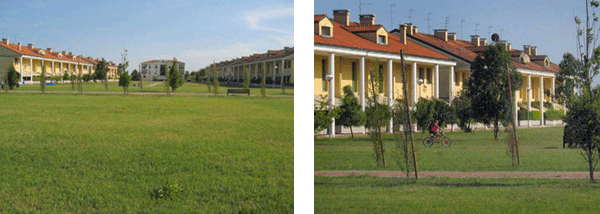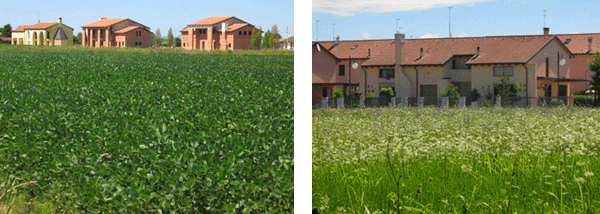


Ten years ago JAPA the Journal of the American Planning Association, published a point-counterpoint debate on sprawl.
The issue 2, vol.73 Spring 2007 reports a review roundtable, revisiting the sprawl debate by exploring two new books on the subject:
BRUEGMAN R.
SPRAWL: A COMPACT HISTORY,
THE UNIVERSITY OF CHICAGO PRESS. CHICAGO 2006
We have to start with where we were in 1950. In 1950 we had 150 million people, about 40 million homes, 50 million jobs, and about 20 billion square feet of non residential space. In 2006 we are 300 million people, twice as many people, and 120 million homes, three times as many as in 1950. We are at 160 million jobs, including part-time ones. We have 90 billion square feet of nonresidential space, four and an half times the amount of nonresidential space in 1950.
Between 1950 and 2006 how could cities meet this explosive growth by themselves?
Some cities have recently seen a rebound. It was more difficult at the time to rebuilt and redevelop in central cities than it was to invest in the greenfields. And developers had to meet market demands quickly. Let's face it, people wanted new suburban homes, and builders delivered. But that was all part of meeting growing and changing needs, including the needs of a mass market.

Sprawl has always been with us. Sprawl is not so bad, that it has been around a long time, since people who are criticizing it are snob, elitist and architectural critics.
Sprawl is really a free market response that exists because of affluence and government policies have had no impact. Federal spending today goes more heavily per capita to central cities than to suburbs.
Shanghai tripled its population over the past 50 years, and has had an average annual growth of 25.7% in urban construction over the past decade. Shanghai footprint today remains within 10 kilometers (6 miles) of its primary center. How is this the same sprawl we are currently experienced in the 150 miles Dallas-Fort Worth region (250 kilometers)? Is sprawl the same phenomenon worldwide?
Can we call sprawl the declining density in the metropolitan area between Padova and Mestre, or in the belt Municipality of greater Venezia? Can we call suburbs or exurbia neighborhoods as Cazzago, Mellaredo, Caltana, Gaggio, Maerne that have a distance from the core of Mestre shorter than 20 kilometers, and the same from the core of Padova or Treviso?
Probably planners just say sprawl and thinks about density and declining density gradient, continuity in built environment, and mixed uses. Probably we need much more measuring.
When any County Commission goes to impose higher density rezoning one neighborhood, people say no, we like our neighborhood just the way it is, thank you, and so they become NIMBY (not in my backyard).
In the last 10 or 15 years or more studies have shown that a very, very high percentage of households want a singles family home and a private yard. However, not everyone does. The strongest housing markets in Seattle area have been condo markets. The Price per square foot was much higher than the single-family homes in the best suburbs. Preferences may be becoming more eterogeneous. For example Phoenix and Las Vegas are becoming denser, but they will not expand hugely. They will fill in their cores. Their suburbs will become more urban. These were the ten years in which the preference for high-density urban living has become a real trend along with suburbanization. Los Angeles is a lot denser than a lot of other places.
In 2006 we will add an half million people over 65. In 2025 that number will grow to nearly 2 million people for that year alone. We are not preparing ourselves for the needs of a growing senior population. On top of that 35% of the household will be single-persons ones. The single person probably has very different preferences. We really don't know where we need to start envisioning this kind of future.
We don't really think that market is on one side and urban planning on the other. We know that the market is planned by interest rates, taxes and so on, market is not naturally established. So we have to think that planning has to think about access to opportunity. Do our low-income kids have access to good school? Do our laborers have access to affordable housing near the jobs that they are going to be working at? Do the education system work well together? All these are underdefined in planning.
Let's not confuse zoning with planning. We have to accommodate growth.
The market created sprawl and the market could eliminate sprawl. There are price-driven trends towards smaller lots. The concern about low density will die away.

Are the same trends going on in the metropolitan area of central Veneto? Are our suburban neighborhoods growing denser and more urban? What's the role of our small metropolitan nodes, the historical network of little and medium-sized towns? Do they play the role of starter for densification and more urban asset, out of the main cores? Do they suffer the growth in new greenfield areas, or do they benefit from new coming households, new economic zones or new service clusters (as schools, logistic, medical care)? Can these urban activities work for denser settlement, less traffic and a final light cost for metropolitan management?
